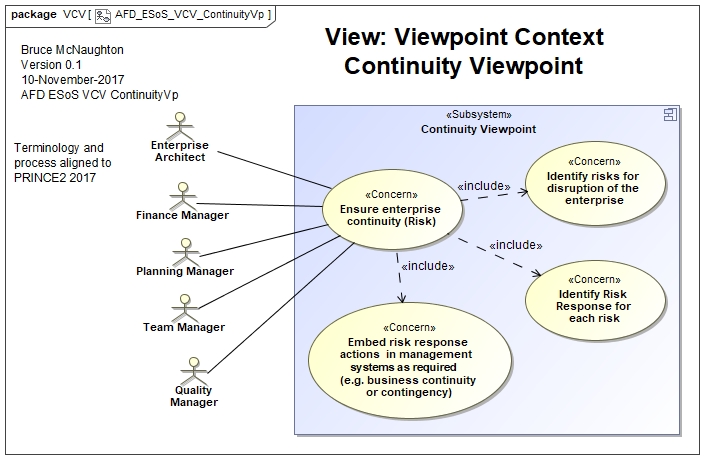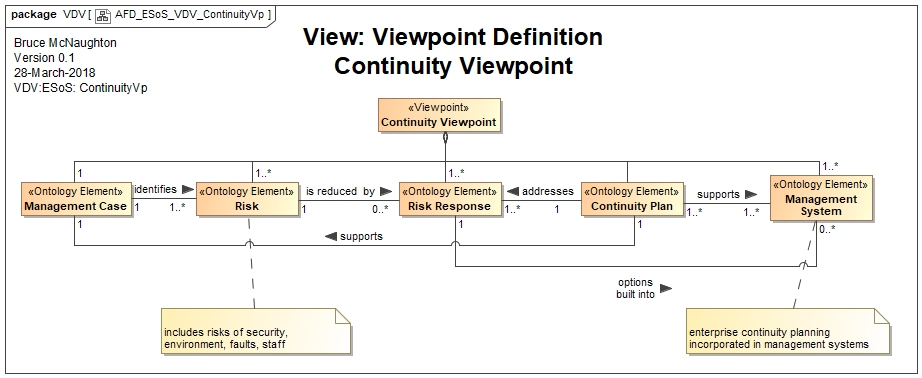Continuity Viewpoint
Description
The Continuity Viewpoint describes the approach to creating the Continuity View for an Architecture Description.
The Continuity Viewpoint ensures that enterprise wide continuity strategies and plans are prepared within the architectural development and all of the aspects of the enterprise are considered.
This viewpoint looks across all of the risk areas identified during the architectural work and identifies any risks that require a coordinated and managed response.
See ISO 22301:2012 for a description of a Business Continuity Management System and the Business Continuity Plan.
Rationale
- Continuity and Resilience are key attributes of an organisation.
- Business Continuity Planning is a key aspect of maintaining customer satisfaction.
- Ensure that business continuity is considered and integrated into the development of the architecture description.
Stakeholders and their Concerns

Ontology Concepts and System Descriptions
System Description: Management System,

Models
Continuity Model (Trigger steps to initiate the continuity plans).
Revisions to other models based upon additional continuity capability requirements.
Steps to Create the View
- Review the strategic risk model, value stream model, Organizational capability model
- Understand the supply risks and options
- Identify the Risk Responses that require continuity planning.
- For each risk response, identify
- The actions and resources required
- The timing and sequence of the actions
- The roles and responsibilities of individuals when responding.
- Consolidate the information into a consolidated continuity plan.
- Ensure the financial models in the Strategic Plan incorporate the required costs.
- Ensure that the supplier capabilities also include continuity plan requirements.
- Final review of the continuity plans.
Correspondences
CR01: Ensure continuity plan financial costs are in the financial cost model
CR02: Ensure that the Strategic Risk Model includes indications of continuity plans and triggers.
CR03: Ensure that supplier contracts include any requirements for continuity planning and actions.
Examples
Examples of typical continuity planning found in organisations can be seen here.
Sources
- Adaptive Enterprise, Stephan Haeckel
- Competitive Advantage, Michael E. Porter
- Dynamic Capabilities and Strategic Management, David J. Teece
- Enterprise Architecture as Strategy, Jeanne W. Ross and Peter Weill and David C. Robertson
- Exponential Organizations, Salim Ismail
- Management: Tasks, Responsibilities and Practices, Peter Drucker
- Requisite Organisation, Elliott Jaques
- The Essential Advantage, Paul Leinwand and Cesare Mainardi
Notes
Continuity planning to be integrated into management systems as a natural part of the system.